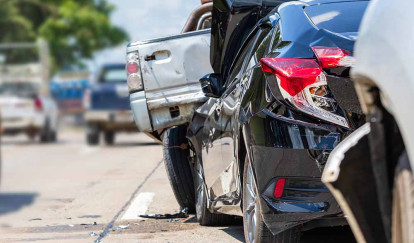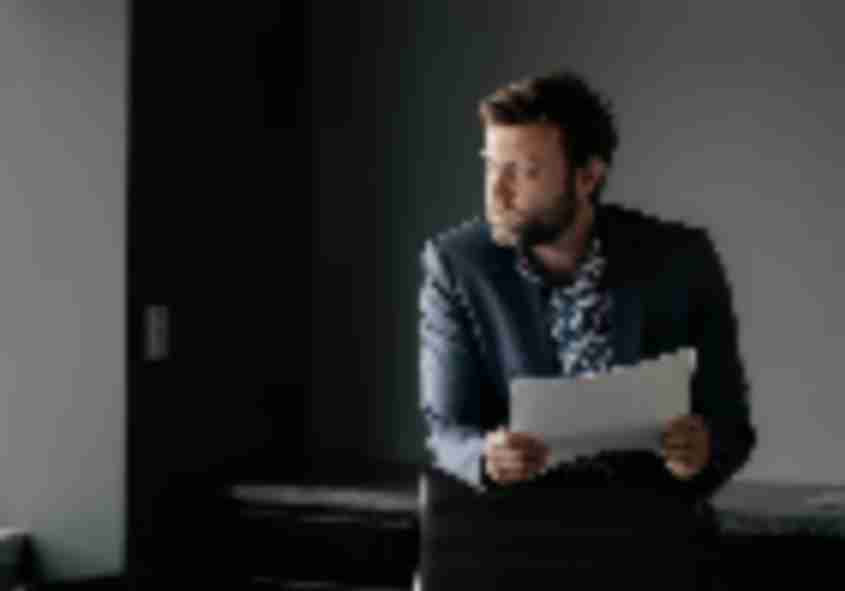
Share This Article
Who is at fault is important when it comes to any car accident. It determines which driver is liable for the damages and whose insurance should pay. But while it’s often easy to see who is at fault in a simple car accident, accidents with three or more cars tend to make the situations a little fuzzier. In a three-car accident, who is at fault? It may not just be the person who caused the initial car accident. Learn more about what a three-way car accident can look like and how to determine the percentage of fault, as well as how an auto accident attorney can help you, in today’s blog.
What Constitutes a Three-Way Car Accident?
A three-way car accident occurs most often when one vehicle (Vehicle A) hits another vehicle (Vehicle B), setting off a chain-reaction accident in which Vehicle B hits a third (Vehicle C). Most of the time, the driver of Vehicle A is at fault as their actions led to a collision. However, there are instances in which Vehicle B or even Vehicle C might be partly responsible for the crash.
For instance, maybe Vehicle A and Vehicle B end up in a rear-end collision. In the process, Vehicle B was pushed forward into Vehicle C just as Vehicle C swiftly changed lanes. In those cases, Vehicle A and Vehicle C are at fault. But what if Vehicle B was rear-ended while tailgating Vehicle C? In that case, Vehicle A is mostly responsible as it caused the initial accident, but Vehicle B might be partly responsible for the auto accident.
Some common causes of three-way car accidents include:
Negligence of Any of the Parties
Negligent driving will always be taken into account when determining fault in a three-way car accident. Maybe Vehicle A had broken headlights while driving at night, but the driver of Vehicle B slowed their car for a turn without turning on their turn signal. A certain duty of care is expected when you drive, such as practicing safe driving techniques and making sure your car is fully functional. Negligence can contribute to a crash for any driver and can lead to at least partial fault.
Unsafe Lane Switches
There are a number of ways that unsafe lane switches can lead to a three-way car accident. Sometimes cars straddle the line for an extended period of time without settling on any one lane. Other times, they don’t turn on their turn signal because it’s just a quick lane switch, or they turn it on too slowly. Another unsafe lane switch that leads to car crashes involves switching into a new lane without giving proper space to the other cars, effectively “cutting off” the driver behind.
Distracted Driving
Keep your eyes on the road and your hands on the wheel. Every driver knows this is essential, but humans can become distracted. Texting while driving, juggling fast food and the steering wheel, and driving under the influence are all examples of distracted driving. Even turning your head to carry on a conversation with one of your passengers can end in a car accident. Distracted driving is one other potential cause that will be investigated in the insurance process to determine fault.
Tailgating
Tailgating involves one car driving too closely behind the car in front of them, or “riding on their tail.” Most drivers adhere to a “three-second rule.” There should be at least three seconds of distance between yourself and the car ahead. On a residential or city street, that might be 30 feet. On the highway, the space should be wider, as you will likely be driving over 40 miles per hour.
Tailgating is often a cause of partial fault in a three-way car accident. The tailgating driver may not have been the one to start the crash, but because they were positioned too close to another car, they were responsible for the chain reaction. They may not have the majority percentage of fault, but they will be partly liable for the crash at the end of the investigation and the court case.
What Is the Percentage of Fault in Regard to a Vehicle Accident?
As established above, in a multi-vehicle accident, fault may not be cut and dry. The percentage of fault is determined in order to decide whose insurance should cover the cost of the accident. Most states follow either a 50% rule or a 51% rule. By this law, if you are found to be at least 50 or 51% (depending on the state in which you live), you cannot recover damages for injuries and repairs.
Virginia, however, has a stricter contributory negligence law called the pure contributory negligence rule. According to pure contributory negligence, if a jury finds you to be even 1% responsible for a three-way car accident, you cannot recover any damages. That means any costly repairs or medical bills you might have will all be the responsibility of you and your insurance. This is why driving with more than the minimum car insurance is essential — and why it’s essential to have a good Virginia car accident attorney who can help you.
Contact an Experienced Car Accident Attorney Today
Three-way car accidents are stressful enough, and finding the percentage of fault can be overwhelming. It’s not an experience that you should have to go through alone. That’s why a personal injury lawyer, like those at Commonwealth Law Group, is here to help. A car accident attorney with our firm can build your case and defend your right to recover damages in the event of a preventable car accident in which you weren’t at fault. We’re experienced with both the courts and insurance companies. We’ve been in operation for nearly a decade, and our car accident lawyers bring years of past experience from other firms. Contact us today to learn more about what Commonwealth Law Group can do for you or to schedule a consultation.
If you have been injured at work or through the negligence of another individual or entity, contact us at (804) 999-9999 or or use the form below to connect with our legal team. We will fight to get you the justice you deserve.
